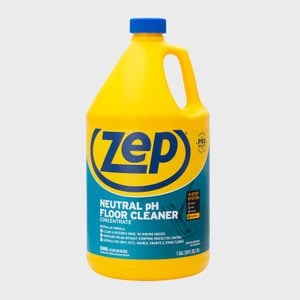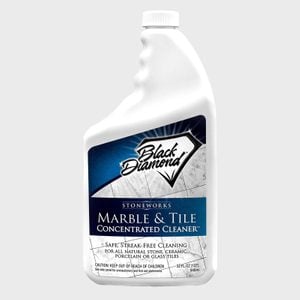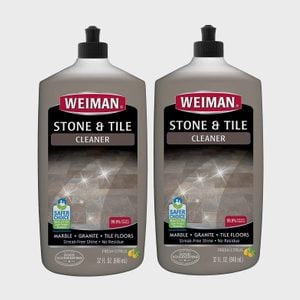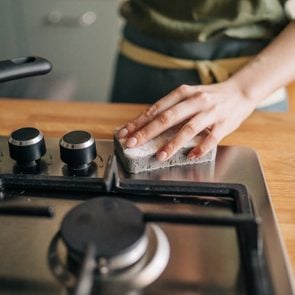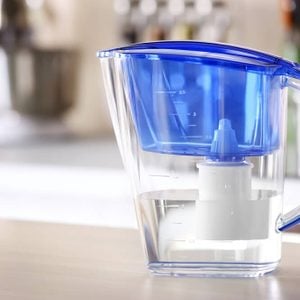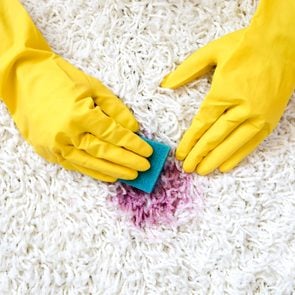How to Clean Marble Floors So They Shine
Updated: Mar. 13, 2024
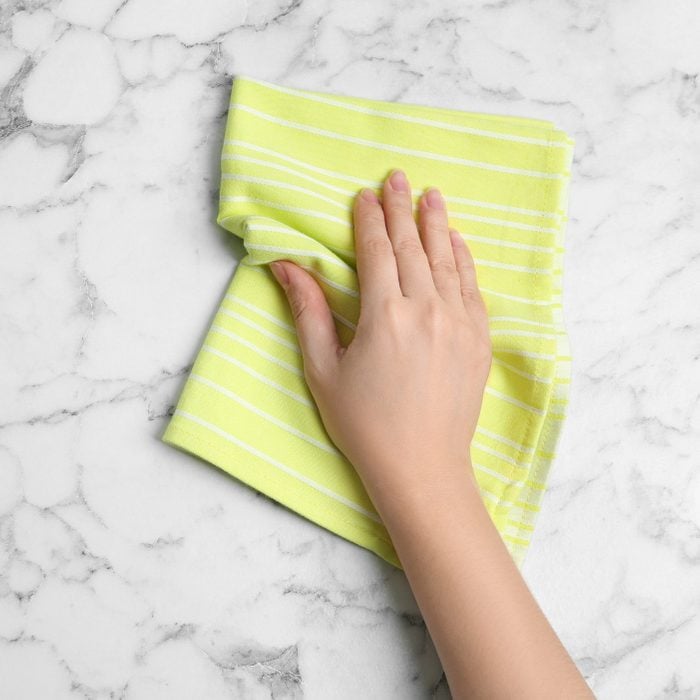
Marble floors can make a statement in your home, but this natural stone requires high-end care. Here's how to clean marble floors and preserve their classic good looks.
Our editors and experts handpick every product we feature. We may earn a commission from your purchases.
Marble is a natural stone and high-end flooring material, so it’s easy to assume that it’s extremely durable—it is, after all, the material used to construct ancient structures and buildings that have stood for centuries. The truth, however, is more complex, and often causes confusion among homeowners who aren’t sure how to clean marble floors.
Proper floor cleaning and care is very important for a natural, porous material like marble, says Elena Ledoux, founder and CEO of Superb Maids in Las Vegas. “Marble floors are very tricky because they are surprisingly not very robust and can get damaged and stained very easily.”
There are many products you shouldn’t use on marble, and while cleaning marble floors may not be as intensive as learning how to clean a bathroom or how to clean your kitchen, it does require planning. Thanks to its very specific maintenance requirements, you should set aside some extra time in your cleaning schedule to learn how to clean and properly care for this material. Doing so can ensure that its beauty lasts as long as the Acropolis. Follow this step-by-step guide to learn how to clean marble floors like a pro.
How often should you clean marble floors?
As a general rule, experts recommend cleaning marble floors every week to 10 days. Of course, this depends on whether they’re in high-traffic rooms and whether you have pets or children in the house. “To me, it’s a pretty good investment of effort,” says Ledoux, who finds cleaning marble “therapeutic.” If you don’t keep up with caring for your marble floors, over time they will start to look dull, streaky and lose their shine.
Why are marble floors hard to clean?
Marble is a fairly soft stone—only a third to half as hard as granite—so it scratches very easily. “Even a paper towel can scratch marble,” says Ledoux. So it’s important to be cautious with brushes, sponges and anything abrasive, even vacuum cleaners.
Additionally, marble is quite porous, meaning it absorbs liquids easily, and things like lotion, oil and grease can all cause discoloration and staining. Standing water can even seep into the stone and cause stains (one reason marble needs to be sealed regularly).
Marble is also known as a calcareous stone, meaning it contains the mineral calcite. Calcite reacts strongly with anything even slightly acidic, including household cleaners like ammonia and white vinegar. Even spills of things that might be acidic, like tomato sauce, lemon juice or alcohol can eat away the stone and leave permanent dull spots known as etching. That’s why it’s important to use only pH-neutral cleaning products on marble, including when you clean your marble countertops.
How to clean marble floors
As we mentioned, you’ll want to avoid any abrasive cleaners, and that includes some vacuums, which can actually scratch marble. Ledoux likes the Miele Boost Vacuum, which features a natural-bristle brush that won’t scratch surfaces. Cleaning with microfiber cloths is also always preferred with marble.
Supplies:
- Miele Boost Vacuum
- O-Cedar microfiber spin mop
- Bona microfiber floor mop
- Bona microfiber pads
- Microfiber cloth
- Zep Neutral pH Floor Cleaner
- Black Diamond Marble and Tile Floor Cleaner
- Bucket
- Warm water
Directions:
-
Vacuum the floor with a marble-friendly vacuum. If you skip this step, Ledoux says, you’ll only end up pushing debris around.
-
Prepare the cleaning product as stated on the product package. Some products may need to be diluted, so pay close attention to this step. If you’ve never used a product before, test it in an inconspicuous area of the floor to make sure it’s not damaging your marble.
-
Get out your best mop. Dip your microfiber mop (the Bona or O-Cedar mops work great) in the cleaning solution and wring it out. You want it damp but not dripping.
-
Know how to mop properly? You’ll want to start at the furthest corner from you and move the mop in an S-shaped pattern, rotating the mop head at each curve so you are always moving any dirt or debris forward, not simply pushing it back and forth.
-
After completing a section, use a dry microfiber mop or dry microfiber cloth to go over it in the same pattern to dry the floor. This prevents streaking and staining. Repeat until the entire floor is clean. Change your mop pads and rinse water at regular intervals as they get dirty.
- If your marble floors are tiles and have grout, use a kitchen sponge to lightly clean the grout last. “If you clean the grout before the tile, you’re dragging a dirty mop over clean grout and have dirty grout again,” says Ledoux. Wipe it dry afterward with a clean, dry microfiber cloth.
Pro tip: “If you’re serious about your floors, use two mops,” Ledoux says. Ideally, one mop is wet and one mop is dry.
How to deep-clean marble floors
If your marble floors have a lot of buildup on them, it’s best to call a professional stone cleaner, experts say. You always want to avoid harsh chemicals and steamers, which can damage marble.
How to seal marble floors
Because marble is a porous stone, you will need to seal marble floors at least once a year using a product made for that purpose. Doing so can help keep your marble floors in pristine shape and should help make regular cleanings easier. A water-based impregnator sealer is recommended because that chemically bonds with the marble to create a long-lasting, waterproof seal rather than just creating a surface seal that repels water. If your marble floor tile is grouted, take a look at the best tile floor cleaners, and seal the grout with a product designed for doing so.
Supplies:
- Miracle Sealants 511 Impregnator Sealer
- Granite Gold Spray Sealer
- Microfiber cloths
Directions:
- Make sure the area to be sealed is completely clean and dry. Prepare the sealant according to the package directions and test it on a small inconspicuous area.
- Using a microfiber cloth, wipe the sealer in even strokes to cover a small (approximately 3-by-3-foot) area. With a clean microfiber cloth, wipe off any excess sealer. Leaving excess sealer on the marble can make the stone cloudy or leave streaks.
- Allow the sealer to dry completely according to package directions.
- If desired, repeat as needed. When the stone is completely sealed, a drop of water should bead up on the surface and not sink into the marble.
The best marble cleaners
How to keep marble floors clean
Once you’ve learned how to clean marble floors and get them shining, you’ll want the effect to last as long as possible, not just after your spring cleaning. Always removing your shoes upon entering the house can cut down on dirt and debris tracked inside and across your floors, Ledoux says. Take care to immediately wipe up spills and splashes on marble floors in high-traffic areas, such as kitchens and bathrooms, especially if the liquid that spilled is even slightly acidic.
Marble floors can be a beautiful addition to a home, and with proper care, they can look good for a long time. Regular cleaning with the proper products is an important part of that care. “Our home has to make us healthy and happy,” says Ledoux. So start from the ground up.
Sources:
- Elena Ledoux, founder and CEO of Superb Maids
- Use Natural Stone

